Book Components (Physical Parts)

Front Cover
The outermost part of a book. The front cover usually displays the book’s title, author, and often an image or design to attract readers. It’s typically made of durable material, such as greyboard...
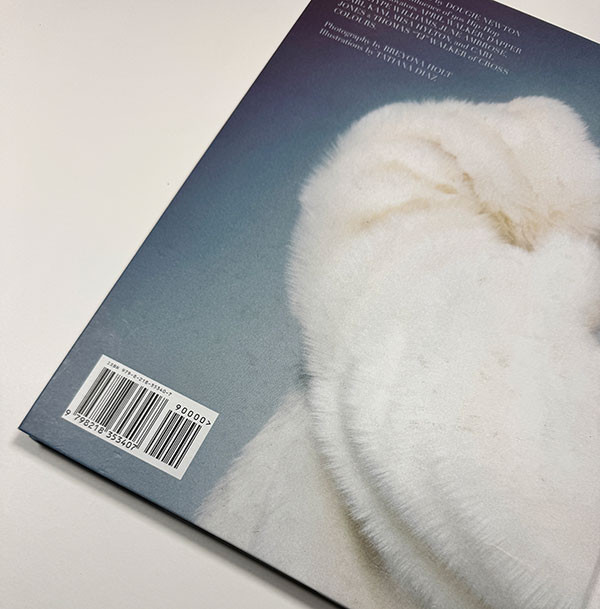
Back Cover
The outer part at the back of a book. The back cover often has a summary, reviews, or a barcode, giving readers a quick peek at what’s inside. Printers usually call this panel Cover 4.
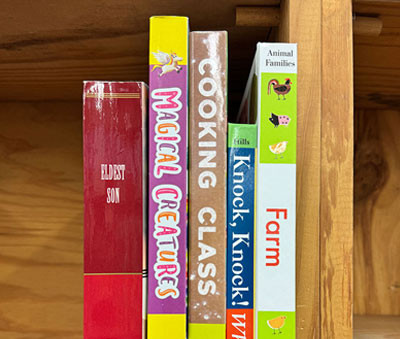
Book Spine
The center part of a book that connects the front and back covers. It typically displays the title, author, and publisher. The spine can feature a creative design since it’s the only part visible wh...
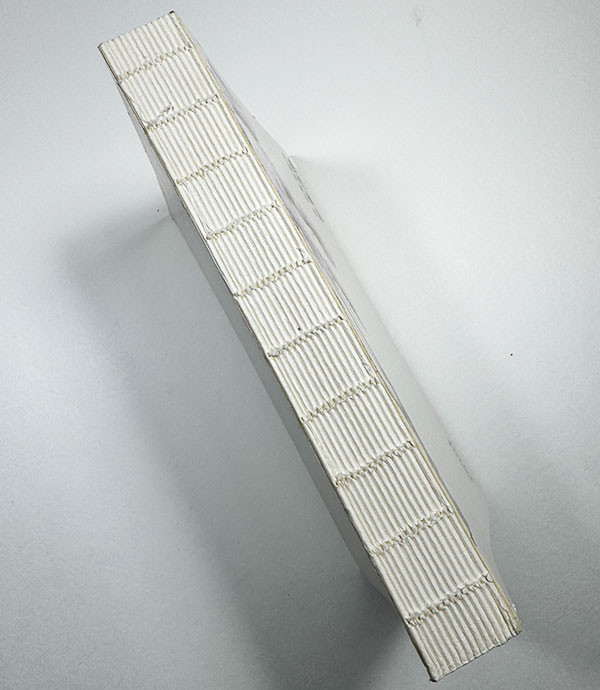
Book Block
The main body of a book, made up of the pages stacked together before the cover is added. The cover and endsheets aren’t part of the book block. In an endsheet-style hardcover, it starts right after...

Endsheet
An important part of a hardcover book. It’s the paper that connects the book block to the cover, located at the beginning and end of the book. It’s usually a single sheet folded in half, with one ...
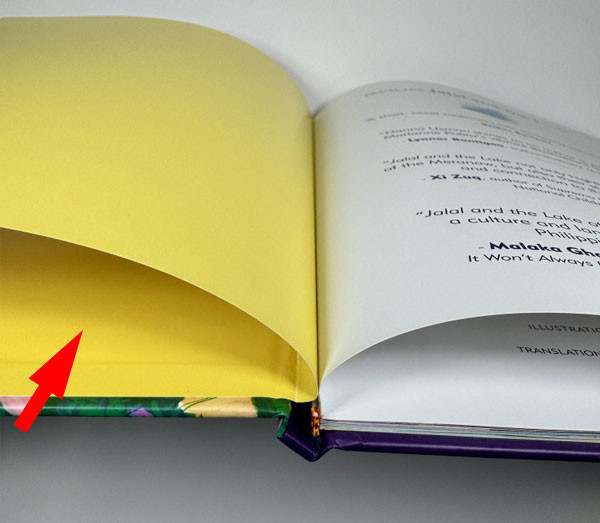
Pastedown
The pastedown is the half of the endsheet that’s glued to the inside of the book’s cover. It’s the part you see when you open the front or back cover. Unlike the flyleaf, it’s not loose and it...
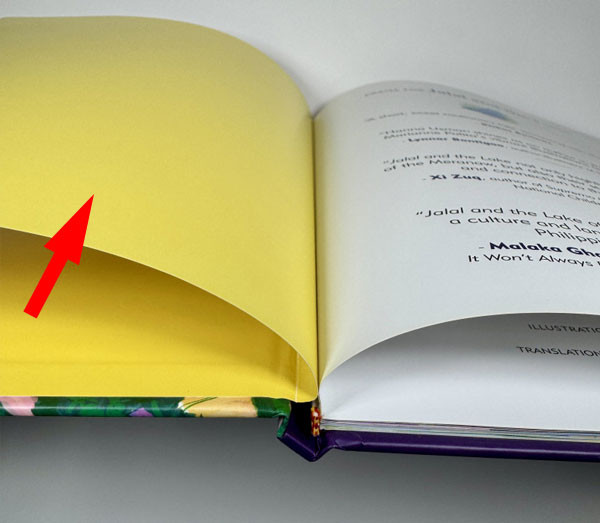
Flyleaf
The flyleaf is the free half of the endsheet, which is a sheet (endsheet), folded in half to connect the cover and book block. It’s the loose part that isn’t glued down, sitting right before or af...
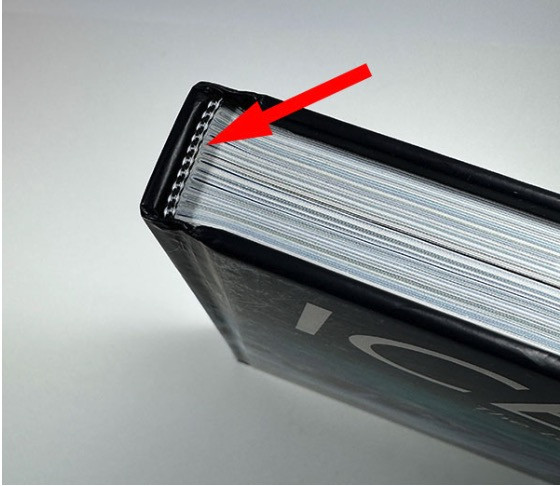
Headband
The headband is a small strip of fabric or thread at the top of a hardcover book’s spine. It reinforces the binding and covers the signatures of the book block for a cleaner, more finished look. In...
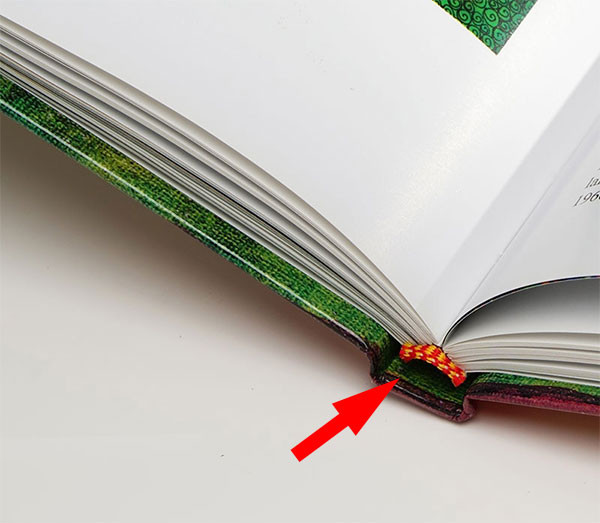
Tailband
The tailband is a small strip at the bottom of a hardcover book’s spine, reinforcing the binding. It’s identical to the headband but sits at the opposite end.
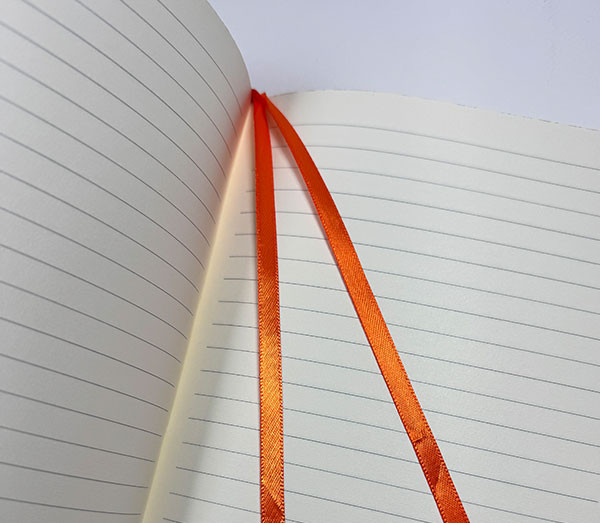
Ribbon Bookmark
It’s a thin strip of fabric attached to the top of a book’s spine. This strip functions as a bookmark and adds a decorative touch, with some books even using two ribbons for extra convenience or s...

Dust Jacket
It’s a removable paper cover wrapped around a hardcover book. It can vary in specs, like thickness or lamination, to suit different needs. It protects the book while showing the title, summary or en...
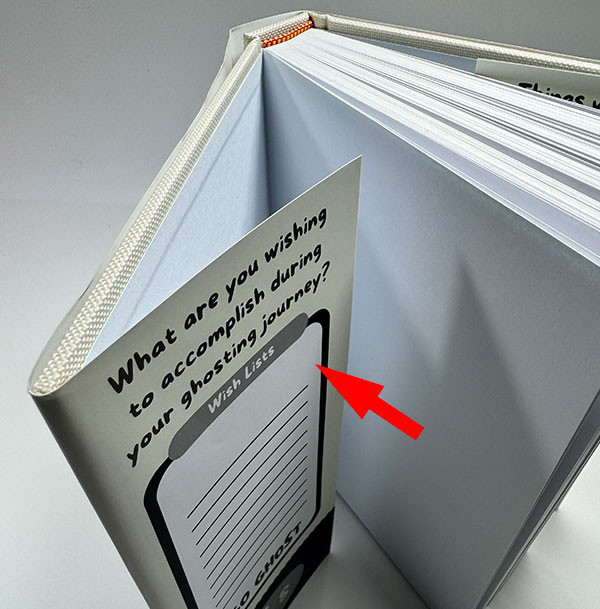
Jacket Flap
The jacket flap is the folded part of a dust jacket that tucks inside the front or back cover, usually about 3-5 inches wide depending on the book’s size. It often holds extra info like a summary, a...
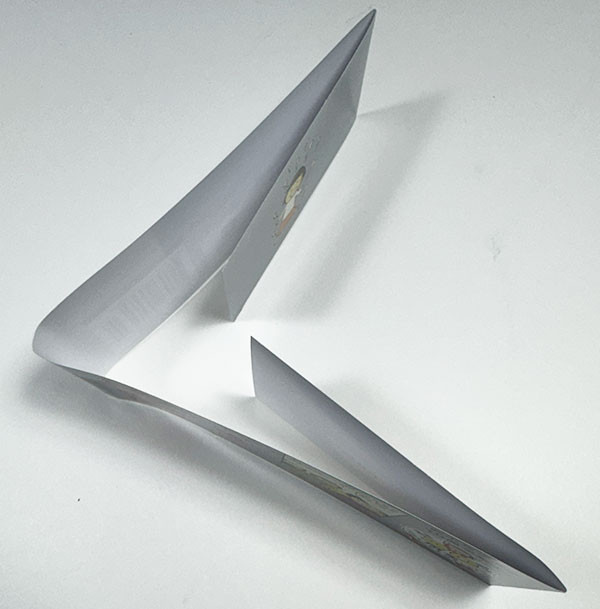
Belly Band
Sometimes called an obi or book band, is a strip of paper wrapped around a book’s middle. It highlights extras like awards, promotions, or a brief pitch, without altering the cover or dust jacket. I...
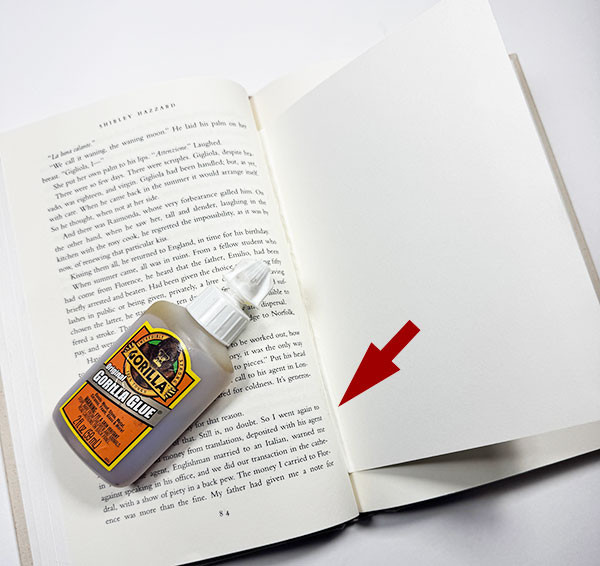
Tip-In Page
A tip-in page is a sheet bound back into a book after it’s fully constructed. It serves as a fix, for pages that planned or unplanned that didn’t make it into the book block but need to be added ...

Tissue Guard
A tissue guard is a thin, semi-transparent sheet placed over an illustration page. In the past, text and illustration pages were printed differently, with illustration pages using more oily ink. The t...
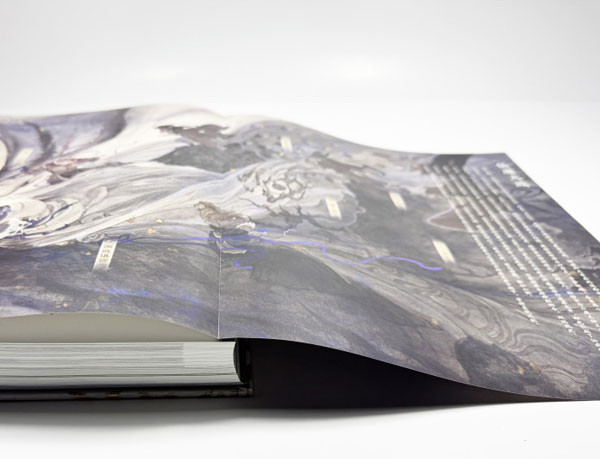
Fold-Out Page
A page that extends beyond the book’s standard size when unfolded, perfect for maps, wide illustrations, or detailed charts. It can be any page in the book, placed wherever it fits. It might be inse...
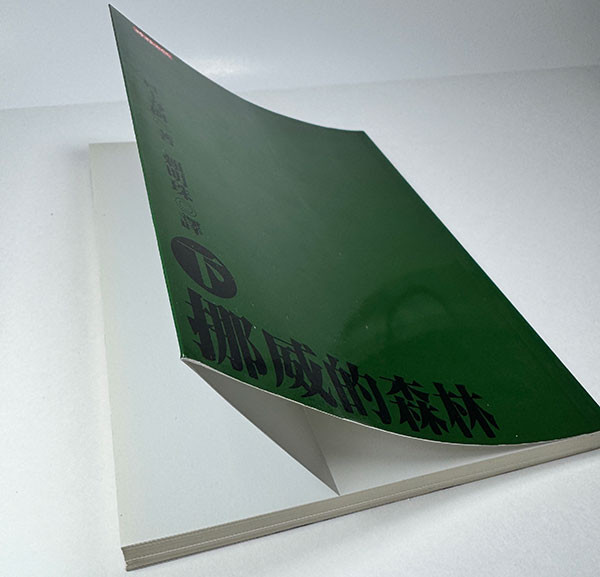
French Flap
A paperback cover with folded extensions that mimic dust jacket flaps. These flaps protect the cover corners for added durability and give the book a premium feel compared to a standard paperback. You...
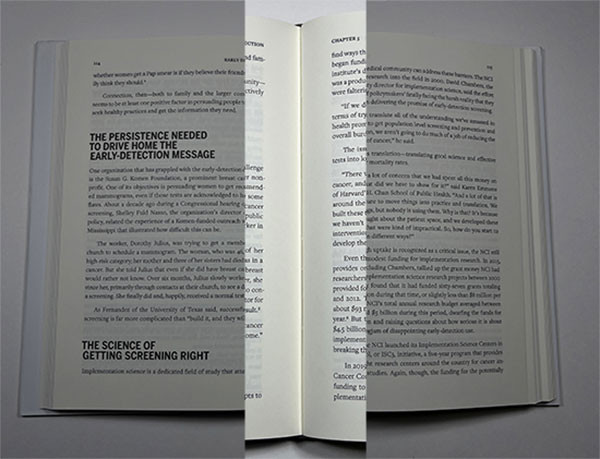
Gutter
The gutter refers to the inner margin area where the pages join the spine. It’s the space on each page next to the binding, shaped by the curve when the book opens. Its size varies. Thicker books or...
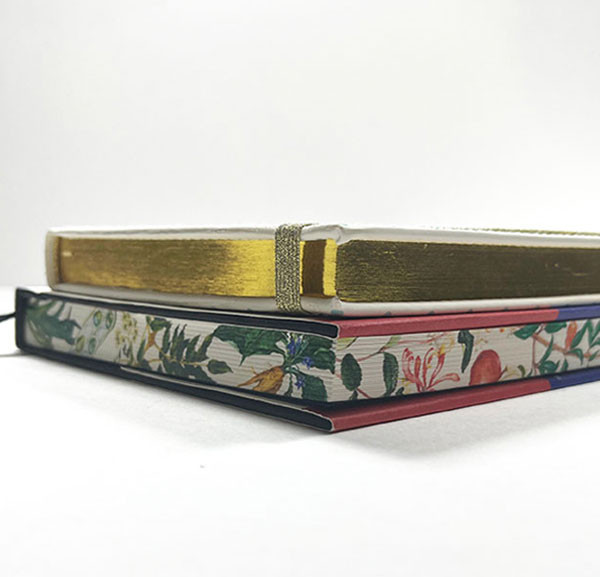
Book Edge
The book edge refers to the outer boundaries of the book’s pages as fore-edge, head, and tail. The fore-edge is the side opposite the spine, visible when the book is closed. The head is the top edge...
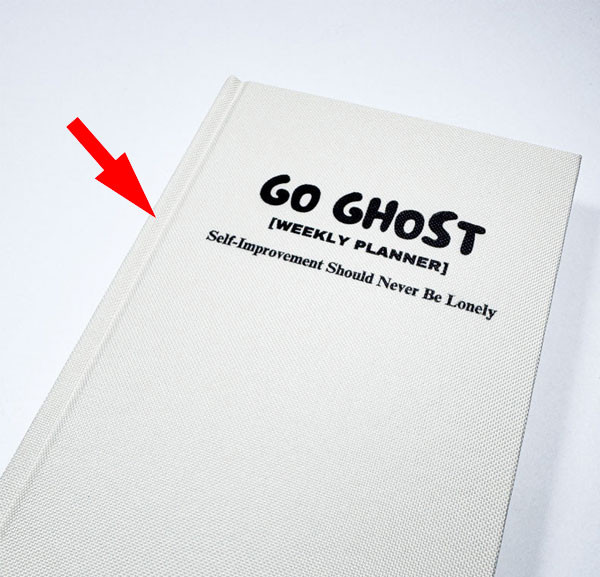
Hinge
The hinge is the bend line between the cover and spine on a hardcover book. Hardcover books are made with three pieces of board wrapped with cover materials like paper or cloth, and the hinge is where...

Mull
Mull, also called Super in some British regions, refers to the lightweight fabric glued to the book spine of a hardcover book. This is the reinforcement that holds the signatures together.
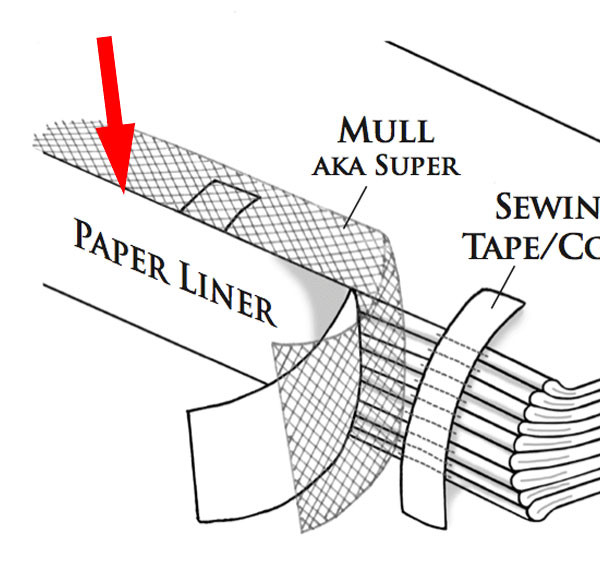
Lining Paper
Lining paper, also called liner is a strip or piece of paper used for reinforcement on the spine or boards of a hardcover book. It is different from the endsheet, which is visible and connects the boo...
